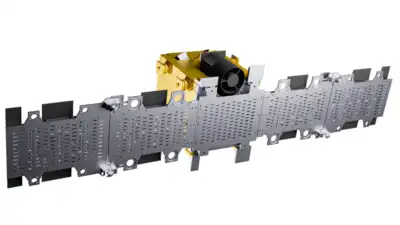ARTICLE AD BOX

BENGALURU: Bengaluru-based spacetech startup
GalaxEye
Thursday announced plans to build its second
Earth observation satellite
, targeting a sharp resolution of 0.5 metres and a revisit time of under three days. The launch is tentatively scheduled for late 2026 or early 2027, with the company also preparing to expand into high-priority international defence markets including the US, West Asia, and Europe.“The second satellite will mark a significant leap in performance over our first satellite, Mission Drishti, which is expected to launch later this year with a resolution of 1.25 metres. Unlike the first mission, the new satellite will be entirely built in-house — showcasing the company’s growing systems integration and manufacturing capabilities,” the firm said.The satellite will deploy GalaxEye’s proprietary SyncFusion technology, which combines
Synthetic Aperture Radar
(SAR) and Optical data acquisition to deliver persistent, all-weather, day-and-night imagery. The improved resolution and rapid revisit capability are aimed squarely at mission-critical sectors such as defence, disaster response, maritime surveillance, and urban security.
“Building on the experience from Drishti and evolving needs of defence customers, we’re thrilled to take the next big step in scaling our constellation and deepening our mission impact. With over 500 aerial test flights, the success of the POEM payload, and our proprietary software stack, we’re confident in our ability to deliver sharper, faster, and more reliable Earth observation data,” said Suyash Singh, founder & CEO of GalaxEye. The company is currently undergoing concept and preliminary design reviews for the second mission. It has also indicated that it will scale its production facilities to support full in-house assembly, testing, and deployment — a move that signals deeper vertical integration and autonomy in future missions.Drishti is expected to validate its core technology stack. It builds on a proven sensor suite and a proprietary data processing pipeline, both of which have been extensively tested on drones, aerial platforms, and in space, including during Isro’s POEM mission.Their satellites are expected to serve both
defence and civilian sectors
with real-time, all-weather capabilities. Applications include risk intelligence, border surveillance, urban safety, and disaster response.



.png)
.png)
.png)
















 4 hours ago
5
4 hours ago
5









 English (US) ·
English (US) ·